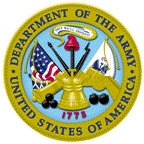United States Department of Defense
Document Type
Article
Date of this Version
2010
Abstract
Background
Hemorrhage is the second leading cause of death in civilian trauma and the leading cause of preventable death in military trauma. The purpose
of this study was to examine the effectiveness of three hemostatic agents: BleedArrest, TraumaDex, and Celox.
Materials and Methods
This was a prospective, experimental study using male Yorkshire swine. The pigs (n = 5 per group) were randomly assigned to one of the following: BleedArrest, TraumaDex, Celox, or control. To simulate a trauma injury, the investigators generated a complex groin injury with transection of the femoral artery and vein in all pigs. After 1 min of uncontrolled hemorrhage, one of the hemostatic agents was poured into the wound, followed by standard wound packing. The control group underwent the same procedures with the exception of the hemostatic agents. In all groups, 5 min of direct manual pressure was applied to the wound followed by a standard pressure dressing. After 30 min, dressings were removed, and the amount of bleeding was determined.
Results
There were significant differences between the BleedArrest (mean = 21.2,SD± 36.6mL) TraumaDex (mean = 68,SD±103.5mL) and Celox (mean = 18.16,SD± 41.6mL) groups compared with Control group (mean = 230,SD± 154mL) (P<0.05).However, therewerenostatistically significant difference between BleedArrest, TraumaDex, and Celox groups (P = 0.478).
Conclusions
BleedArrest, Celox, and TraumaDex were statistically and clinically superior at controlling hemorrhage compared with the standard pressure dressing in the control group.



Comments
Published in Journal of Surgical Research, 164, e125–e129, (2010)